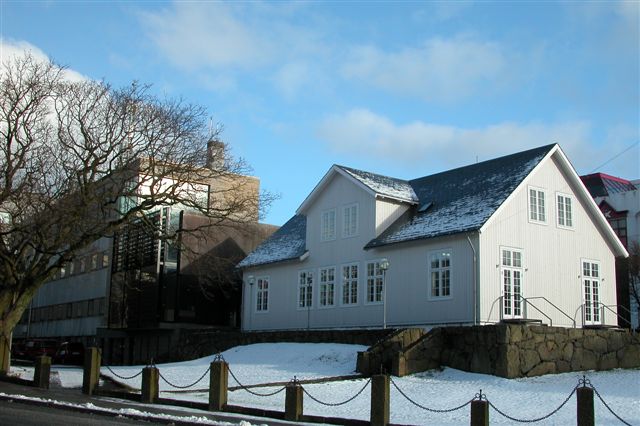Parliamentary culture in the Nordic countries
The Nordic countries have a particular parliamentary culture characterised by consensus and working across party lines. Their parliaments remain influential institutions considering the general trend towards greater executive power. The principles of parliamentary government and universal suffrage were introduced comparatively early in Norden. The world’s oldest parliaments are found in the region, in Iceland and the Faroe Islands.

Political consensus and working across party lines is achieved in various ways, contributing to a parliamentary culture orientated towards negotiations and pragmatic problem solving:
- Minority governments: Since the early twentieth century, minority governments are the most common form of government in Denmark, Norway, and Sweden. This means that a government usually needs to rely on a larger ideological block of either centre-left or centre-right parties. This has consolidated a practice of parliamentary settlement of political issues and contributed to a parliamentary decision-making culture.
- Standing committees: Standing committees have a strong position in all Nordic countries as significant policy-making arenas.
- Party culture: Politics is channelled through ideologically profiled political party organisations, and party discipline is high.
- Physical structure: Unconventionally, the seating order in Norway and Sweden is not by parliamentary group, but by the regional affiliation of individual legislators, while in Iceland seating is decided by random drawing.
- Parliamentary commissions: A distinctive feature of Nordic parliamentarianism is the institution of parliamentary commissions, often populated with technical experts and interest group representatives who are not members of parliament themselves. These commissions generally prepare sector-specific policies. However, they have been declining in the past two decades due to being reduced in their scope and streamlined into tools of public management. This reflects the decline in corporatism more broadly.
The Nordic legislative assemblies exemplify ‘working parliaments’, putting less emphasis on the parliamentary functions of debate and control of the government. This working character is underlined by the introduction of a system of parliamentary deputies in all Nordic countries with the exception of Finland, who act as substitutes instead of the regular representatives when they are unable to attend sessions. Since the early 1970s, the traditional five-party system in the Nordic countries has given way to more complex constellations, and a certain decline in parliamentary consensus can be observed that mirrors the increasing political fragmentation of Nordic societies.
Historic institutions
A distinctive parliamentary culture forms part of the self-image of the Nordic region as well as of the Nordic political model. The Icelandic Alþingi and the Faroese Løgting have roots going back more than a millennium; they are considered the world’s oldest parliaments. The Swedish-Finnish Riksdag or Eduskunta dates back to the fifteenth century; it was unique in its early representation of peasants, and in the eighteenth century second only to Britain’s parliament in terms of a pre-modern development of proto-party politics. The Norwegian Storting firmly defended Norwegian rights in the union with Sweden, and paved the way for independence in 1905. With the concept of folkelighed (~ popular culture) becoming the national ideology in Denmark in the second half of the nineteenth century, the Danish Folketing gained a position comparable to its Nordic sister institutions. Apart from the Faroe Islands, even the autonomous Åland Islands and Greenland have their own legislative assemblies. In the past decades, Sami Assemblies resembling parliaments (but without territorial responsibility and without legislative competence) have been established in Norway, Sweden and Finland.
How are the parliaments organised?
With the constitutional reforms in Denmark in 1953 and in Sweden in 1975, the principle of unicameral parliaments was carried through in all Nordic countries, simplifying legislative structures. Since the Swedish reform of 1994, all of the Nordic parliaments operate with four-year terms of election. In Denmark, Finland and Iceland the free mandate of the legislative body is embodied in the constitution, and a corresponding practice is maintained in Norway and Sweden. While the law in Denmark stipulates that persons convicted of certain crimes are not eligible to stand for election, Finland, Iceland and Norway do not permit certain state officials to run for political office. Norway’s Storting is the only Nordic parliament without the means to exclude an elected member due to major criminal offence and without the option of self-dissolution. In all Nordic parliaments, members of the government enjoy the right of attendance and the right of speech, but not the right to vote. As in the rest of the world, legislators in the Nordic countries tend to be academically trained males, but in international comparison female representation is high (more than 40%, compared to the international average of roughly a quarter, according to data compiled by the Inter-Parliamentary Union in 2018).
The Nordic Council
There has been a special Nordic group in the Inter-Parliamentary Union since 1907 and Nordic legislators have co-operated with one another within the framework of the Nordic Council since 1953. Representatives of Nordic parliaments have regularly been sent to the Assembly of the League of Nations and to the General Assembly of the United Nations: symbols of a democratic consensus in regard to international relations, but also of particularly democratic and parliamentary convictions in the Nordic countries.
Further reading:
- D. Arter, Democracy in Scandinavia: Consensual, Majoritarian or Mixed? (Manchester: University Press, 2006).
- N. Andrén, ‘Five roads to parliamentary democracy’, in E. Allardt et al. eds., Nordic democracy: Ideas, issues, and institutions in politics, economy, education, social and cultural affairs of Denmark, Finland, Iceland, Norway, and Sweden, (Copenhagen: Det Danske Selskab, 1981).
- T. Persson, ‘The Parliaments of the Scandinavian Countries’, in P. Nedergaard and A. Wivel eds., The Routledge Handbook of Scandinavian Politics (London: Routledge, 2018).